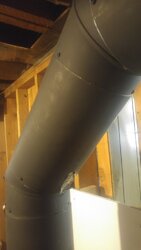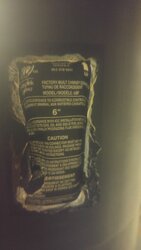Lokidric
New Member
Hard to see but is the upper part of the 45º stove pipe elbow (where the drip is occurring) inserted into the connecting pipe above it or is it vice versa with the male end of the connecting pipe inserted into the female end of the elbow below it?
Every piece of black pipe overlaps the piece below it.

Last edited by a moderator:



